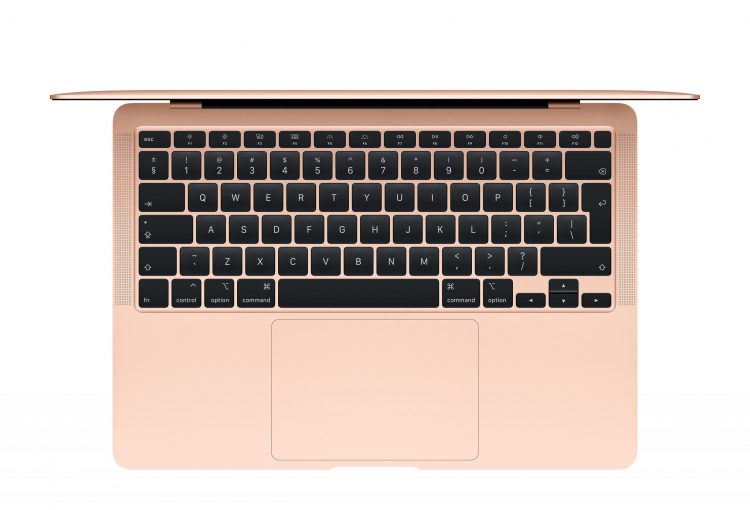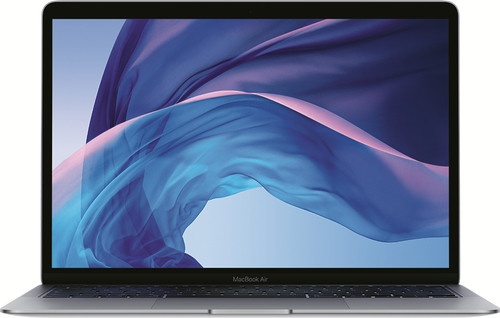13-inch MacBook Air vs. MacBook Pro 2020: which is best for you?
Apple released two redesigned 13-inch MacBooks this year. The MacBook Air 2020 was released in March and the 13-inch MacBook Pro has been available since May. The Air is the entry-level model for everyone, the Pro is for the more demanding user. What should you pay attention to when making a choice? We list the most important considerations.
Keyboard

There is one difference between the MacBook Air and the MacBook Pro that immediately catches the eye: the Pro has a Touch Bar where the Air has the old-fashioned function keys. This is a narrow touch screen with keys that change depending on the app you are currently using. The Touch Bar is a nice extra in our opinion, but certainly not indispensable – it has been around for a number of years and has barely gone beyond the gimmick stage.

Both the MacBook Air and the MacBook Pro 2020 now have a Magic Keyboard with the rock-solid scissor mechanism. That means the butterfly keyboard is a thing of the past – which is a good thing, because this was a headache file for Apple. Also present on both keyboards: a physical Escape key and inverted T-shape arrow keys for easy retrieval.
Design
The MacBook Air has a wedge-shaped design. The back of this MacBook is a bit thicker than the front: it runs from 0.41 to 1.61 centimeters. It is 30.41 cm wide and 21.24 cm deep and weighs 1.29 kg.
The 13-inch MacBook Pro looks a bit more robust and angular and is equally thick everywhere: 1.56 centimeters. It weighs 1.4 kilos, an ounce more than the Air but still very portable. In terms of width and depth, it is the same as the MacBook Air. The Pro is available in silver and space gray. The Air is also available in those colors, plus in a gold-colored variant.
Touch ID
Touch ID is present on both MacBooks. Thanks to this fingerprint scanner, you can easily unlock your Mac. In many places you can use Touch ID instead of a password and confirm your online purchases with Apple Pay. On both the Air and Pro, Touch ID is incorporated in a separate key – on previous Pro models, it was part of the Touch Bar. To protect Touch ID properly, both MacBooks are equipped with a T2 Security Chip.
Screen

The MacBook Air and the MacBook Pro both have a 13.3-inch Retina display – that means the pixels are indistinguishable. The resolution is 2560 x 1600 pixels at both. Both screens support Apple’s True Tone technology, with the screen’s white balance adjusting to the surrounding light.
The screen of the MacBook Pro looks a bit more realistic: that is mainly due to the wide color reproduction. In addition, the screen of the MacBook Pro is slightly brighter: a maximum of 500 instead of 400 nits. If you do a lot of image editing, the advantages of the Pro screen can be a tradeoff.
Connections
The MacBook Air and MacBook Pro come standard with two Thunderbolt 3 connectors. You use this to charge your Mac and to connect external USB-C equipment to it. In any case, you need to buy an adapter (or other cable) to connect “old” USB equipment (and your iPhone!). Do you think two ports are not enough? Then you are dependent on the MacBook Pro: you can also choose four connections. That is only the case with the more expensive variants of the Pro – you pay at least € 2129.
Both the Pro and the Air are still equipped with the “old-fashioned” headphone jack; the mini jack socket. This has not been the case with the iPhone since the iPhone 7.
Specs
The important thing to know is that the Air has a dual-core processor and the Pro a quad-core. It’s a bit short on the corner, but that means the Air can divide its work over two cores and the Pro over four. In addition, the clock speed comes into play: 1.1 GHz with the cheapest Air, 1.4 GHz with the cheapest Pro. This then yields the following calculation:
1.1 x 2 = 2.2 Ghz with the MacBook Air
1.4 x 4 = 5.6 Ghz with the MacBook Pro
Yet reality cannot be captured exactly in a calculation. Because there are also different types of processors used and of different generations, each with their own pros and cons. And then there is the design of the MacBook Pro, which means that the processor is cooled better and can therefore run at higher clock speeds for longer.
You will notice the difference in the heavier applications. Are you planning to play? Or to edit media such as photo, video and audio? Then that is a lot faster and smoother on the MacBook Pro. If you only do daily things on your Mac, you will hardly notice the extra power of the Pro.
Battery life
The Air chip may have less processing power, but it has a special advantage. It is energy efficient, so the Air lasts longer on a battery charge. But you can also get through a complete working day on the Pro. On the Air you can use wireless internet for up to 11 hours or watch movies up to 12 hours. With the Pro, that is 10 hours in both cases.
price
You get the MacBook Air 2020 at home from 1199, the cheapest MacBook Pro costs 1499. But if you choose the things that really feel Pro with the Pro, you must quickly dig deeper into the pouch. Do you want the Pro with the latest chip and four Thunderbolt 3 connections? Then the price immediately rises to € 2129.
Conclusion
Do you necessarily want the latest, are you going to run heavy applications and do you need a lot of connections for external equipment? Then you quickly arrive at the more expensive 13-inch MacBook Pro with four Thunderbolt 3 connections and the very latest chip from Intel. And you may also want to check out last year’s 16-inch MacBook Pro.
It gets more difficult if you are in doubt between the MacBook Air 2020 and the MacBook Pro 2020 with two Thunderbolt connections and the slightly less processor. Then ask yourself again if you really need the Touch Bar, the slightly better screen and the extra power of the Pro. It will cost you hundreds of euros more. As far as we are concerned, in this case the Air is the best choice for most people – you also get an extra hour of battery.
e link

